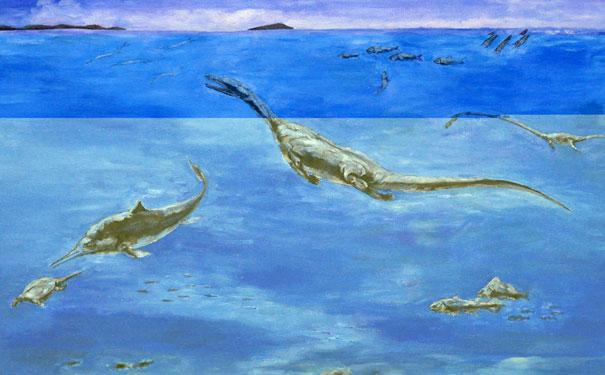
A reconstruction of the Luoping Biota. Image courtesy of Dr Shixue Hu
A fossil discovery in Yunnan Province, China, has thrown new light on the aftermath of the severest mass extinction event in Earth’s history.
Dr Zhong Qiang Chen, from the University of Western Australia, says these fossils will help scientists understand how the ecosystems began to rebuild after the Great Dying, a mass extinction event 252 million years ago (the end of the Permian Period). This event wiped out 96 percent of the marine species on Earth, along with 70 percent of those on land.
20,000 fossils have been found so far, including fishes, marine reptiles (such as ichthyosaurs), arthropods (spiders, insects and crustaceans), gastropods (snails and molluscs) and a few plants – mostly conifers. Dr Chen says that the presence of ichthyosaurs, the top predators of the time, suggests that the ecosystem had fully recovered after the Great Dying.
The Great Dying is believed to have consisted of a volcanic eruption which pumped huge amounts of greenhouse gases into the atmosphere and acidified the oceans. This event affected life more severely than the mass extinction event at the end of the Cretaceous period (65 million years ago) that killed the dinosaurs and caused up to 75 percent of marine species to die out.
Dr Chen hopes that identifying which ecosystem collapsed easily during this event and which recovered afterwards will help provide information for the management of modern ecosystems.






